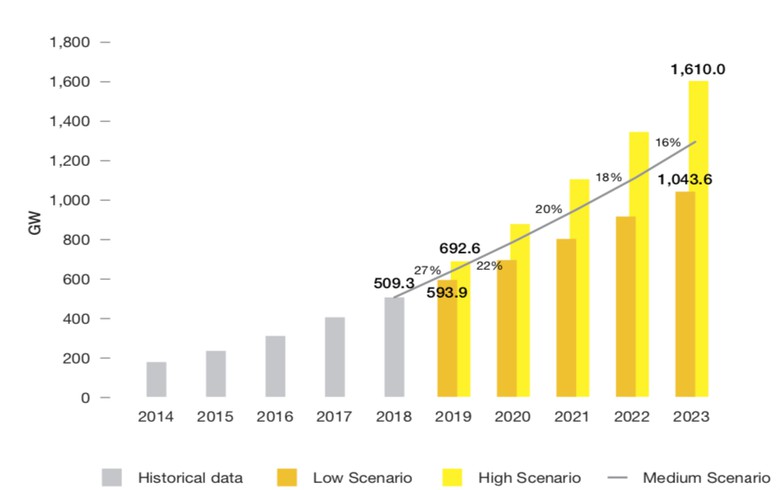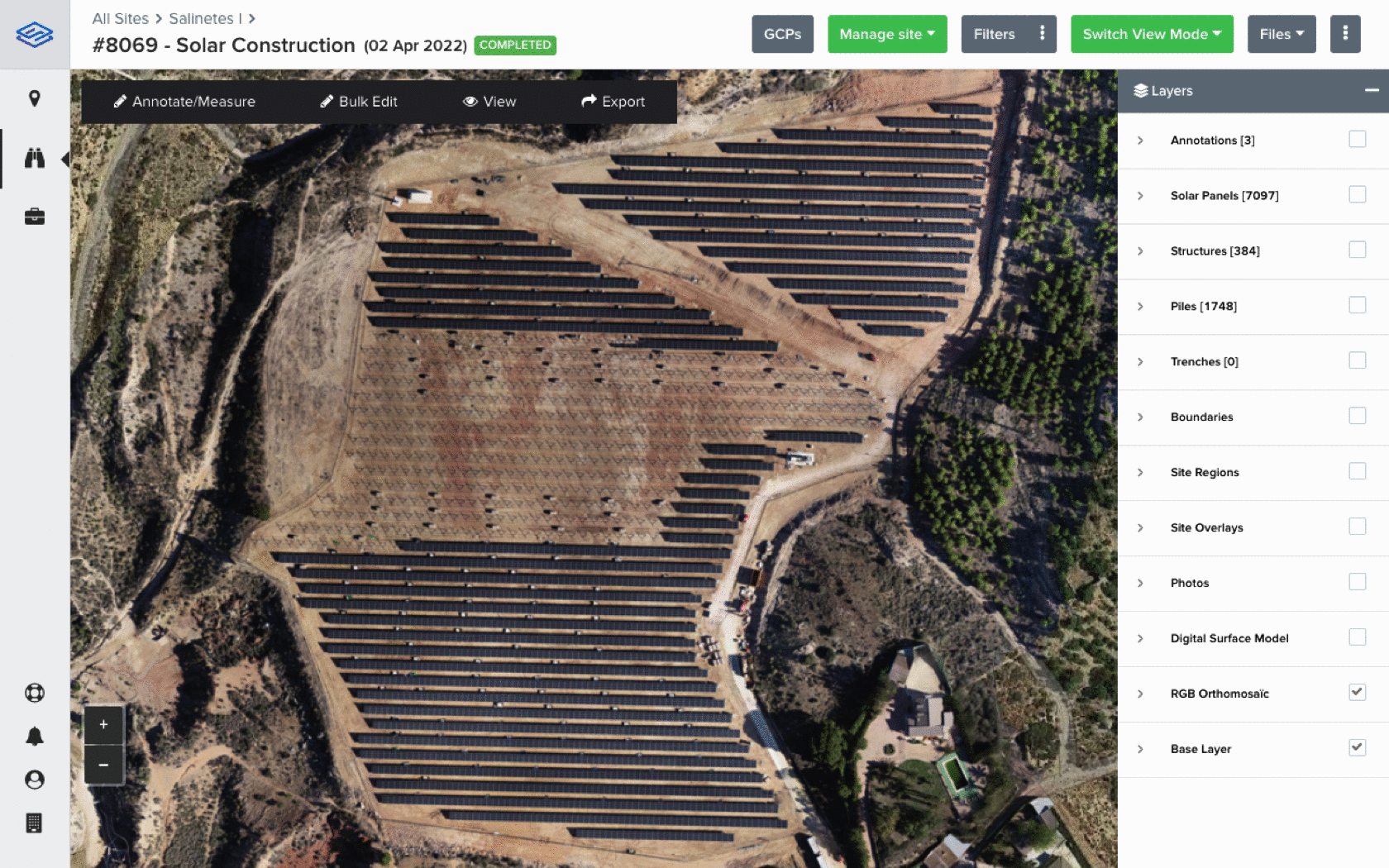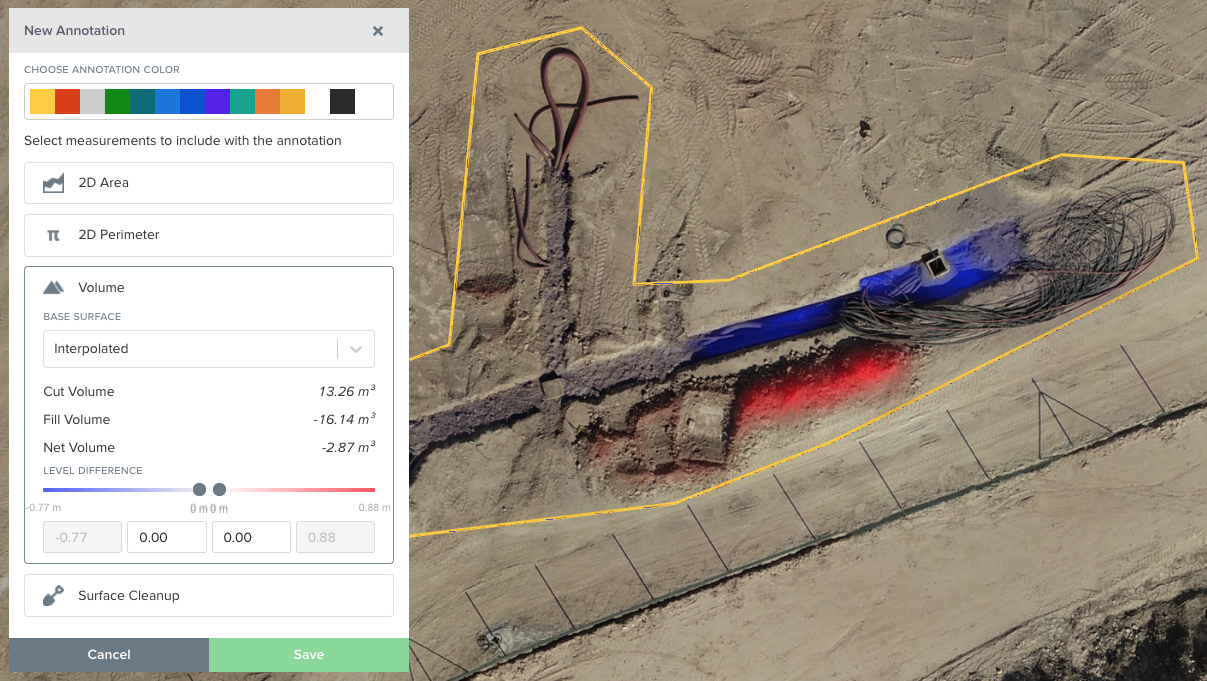The solar energy industry has been consistently scaling to new heights. It continues its journey to meet the increasing demand for clean power sources at competitive prices.
Therefore, the next big thing the industry focuses on is digitalizing the entire solar lifecycle.

Image: Renewables Now. World total solar PV market scenarios 2019-2023. Source: SolarPower Europe
SolarPower Europe’s latest Global Market Outlook shows that global solar power has broken its annual installation record with 168 GW of new solar PV capacity in 2021.
In 2022, they expect global solar to continue the decade-long record-breaking streak, installing more than 200 GW of solar for the first time.
The decreasing installation and operating costs are major drivers for this exponential increase in solar installation.
The magic of going digital
The term ‘Digital Twin’ is now widely used in the industry. But what is a digital twin for solar construction?
It is a virtual replica of the asset throughout the construction phase. Combining visual data gathered by drones with CAD design plans and pictures collected by workers in the field gives you a complete digital overview of what’s happening on your site.

Data stored in the digital twin can be used for AI-based automation of progress monitoring and quality comparisons with designs.
Key benefits
The main benefits of digitalizing your construction project are increased precision, transparency, and efficiency.
Construction timelines for solar sites are shrinking. What would have taken several months to build ten years ago is now expected to be delivered in weeks. Despite timelines shrinking, there is no room for compromise.
People expect solar sites to last long to support a sustainable future and thus must conform to strict quality requirements. Asset digitalization becomes key for quality assurance and control. Integrating multiple data sources from the Engineering, Procurement & Construction’s (EPC) contractors and subcontractors in one centralized platform enables EPCs to monitor the progress and develop a data-driven action plan.

Going 3D opens up a range of other benefits, from calculating volumes of trenches and erosion problems to validating the proper installation of fences and checking the alignment of trackers.
Structured Task Management
Clear communication between the on-site and office team is key to making informed decisions. A mobile field application like our own Field Link can play a crucial role here. Quickly access the site, CAD layout, necessary documents, punch lists, etc., on the go and collaborate live to avoid miscommunication and ensure everybody is up to speed.

Asset Handover
Transitioning to digital is vital for better productivity. Still, more importantly, it ensures no gap between a solar plant’s different lifecycle stages. Once the EPC has completed the construction phase, they hand over the asset to an Operations and Maintenance team (O&M team). For a smooth transition, the EPC must provide the O&M team with consistent and organized data to understand the solar site and ensure its functioning correctly.
A digital site history offers significant value in making better warranty claims. One example is mapping serial numbers of the panels to help you track the panel history, faulty piles, racks, etc.
In addition, having a clear view of the site at each moment can even help prove compliance with quality requirements and environmental legislation. During the O&M phase of the project, you can use it to pinpoint the origin of performance faults.
Embracing new practices
Any new technology brings change and thus can only be adopted when the end-user is willing to embrace that. It’s therefore crucial to properly train the workforce to apply it while pointing out the value it delivers. A digital twin reduces cost for the company and eliminates some of the more mundane work the site personnel would otherwise have to do: a clear win-win.
Transparency
For investors, lenders, and prospective buyers, transparency is vital. Having high-quality data to support your claims improves confidence.
In the pre-construction phase, such a level of detail can make the difference and win a bid. Later, it showcases conformance to timelines and quality standards, streamlining the payment process.
How does Sitemark stand out with solar construction?
We at Sitemark are devoted to delivering value to our end-user. Therefore, we designed our software ecosystem to work in practice and the field. We offer a very flexible and hassle-free solution by decoupling data acquisition from reporting. An intuitive interface for smooth onboarding, combined with an unlimited amount of users, allows you to expand seamlessly to all stakeholders. Finally, the Fuse platform can operate at scale, supporting massive data for the largest sites while offering flexible integration possibilities.
Conclusion
The digitalization tools will be standardized globally in due time since there is a clear ROI. The digital cost, including basic digital infrastructure, connectivity, and processing, amounts to less than 1% of the total costs.


One Comment